Brief reflection on the selected concept
ERP’s are integrated programs that provide support for major organizational activities. These activities include the management of the sales and marketing, accounting and finance, human resource, manufacturing and general logistics amongst others (Aladwani, 2001, p.266).
Application and discussion of the 10 FMEA steps
The chart below illustrated the key processes involved in the successful implementation of any ERP.
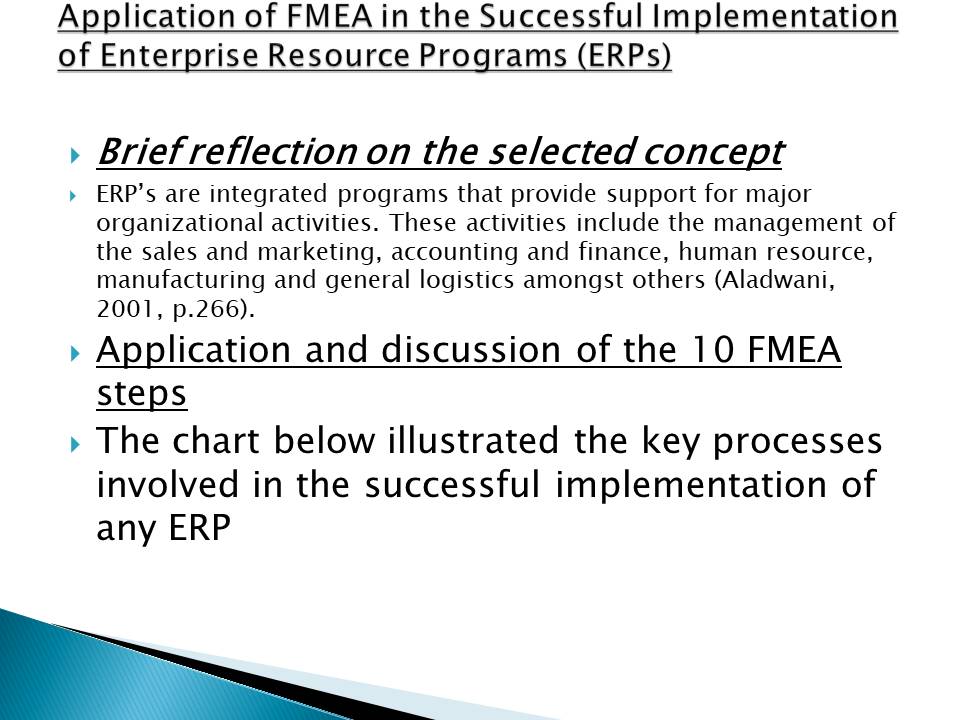
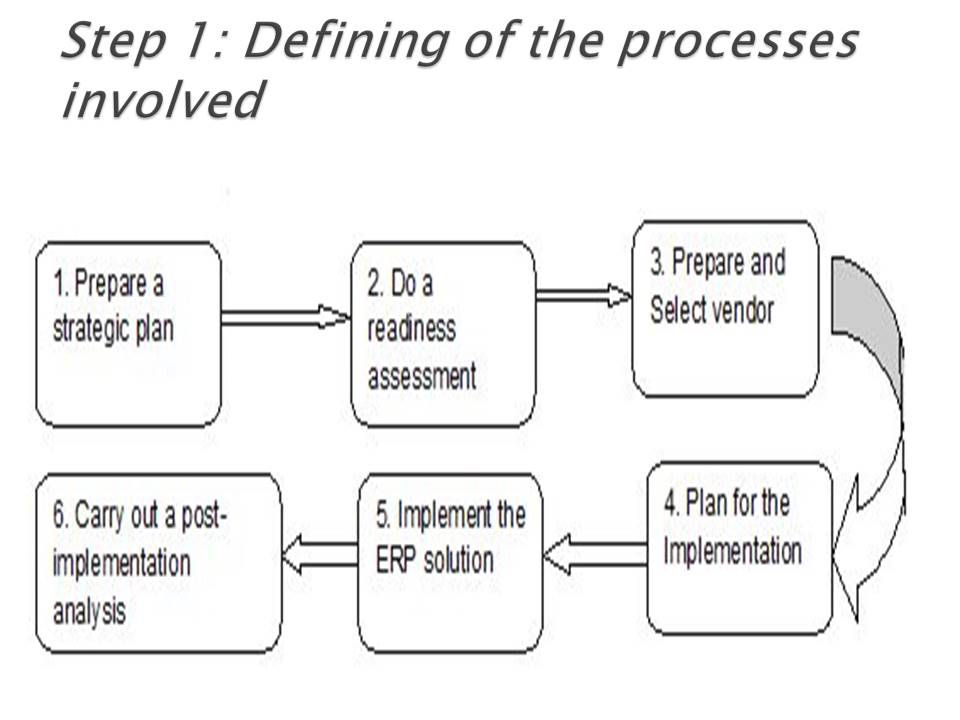
Step 2: Identification of Potential problems
- Failure of the chosen programs to match company needs/operations.
- The mismatch in the hired employees plus the differences in their skills.
- Project mismanagement.
- Poorly created working applications.
- Limited user training and involvement.
- Failure to improve and meet the set technological standards of the created working applications/programs.
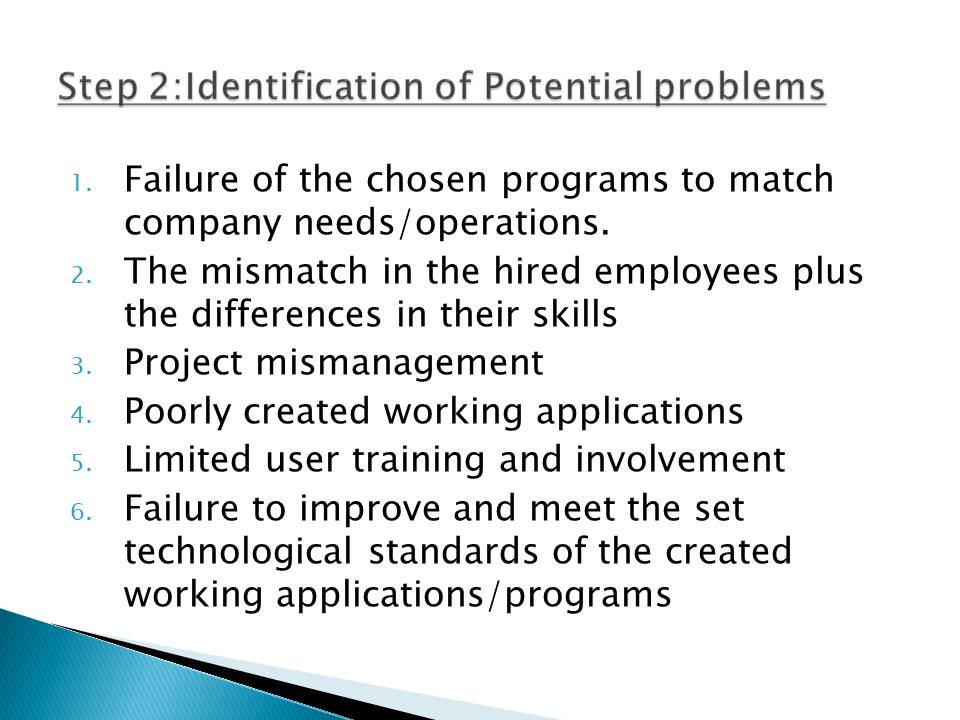
Potential failures’ continuation
Poor communication.
Failure to recognize the need for organizational changes.
Failure to rework on the system to suit user needs (failure to observe Business Process Re-engineering).
Less support from the managers of an organization.
Less monetary support.
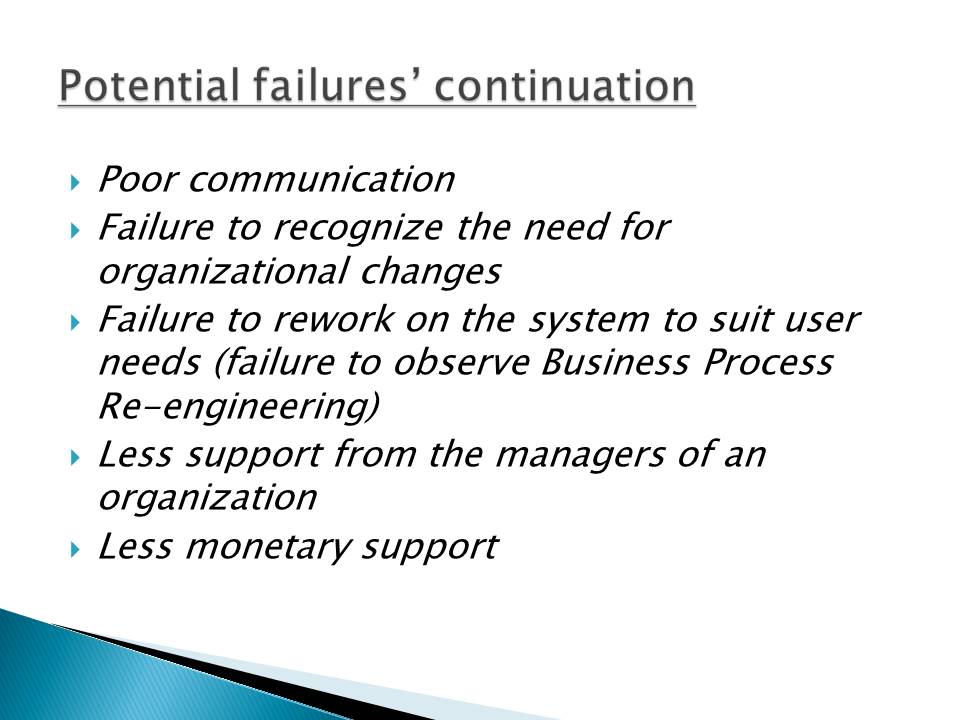
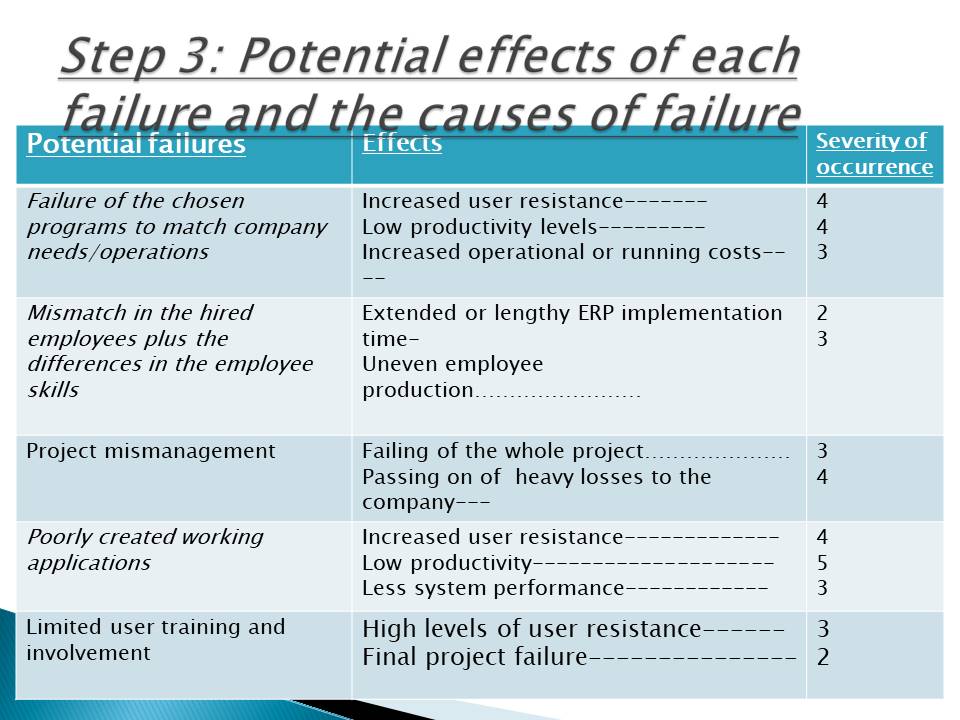
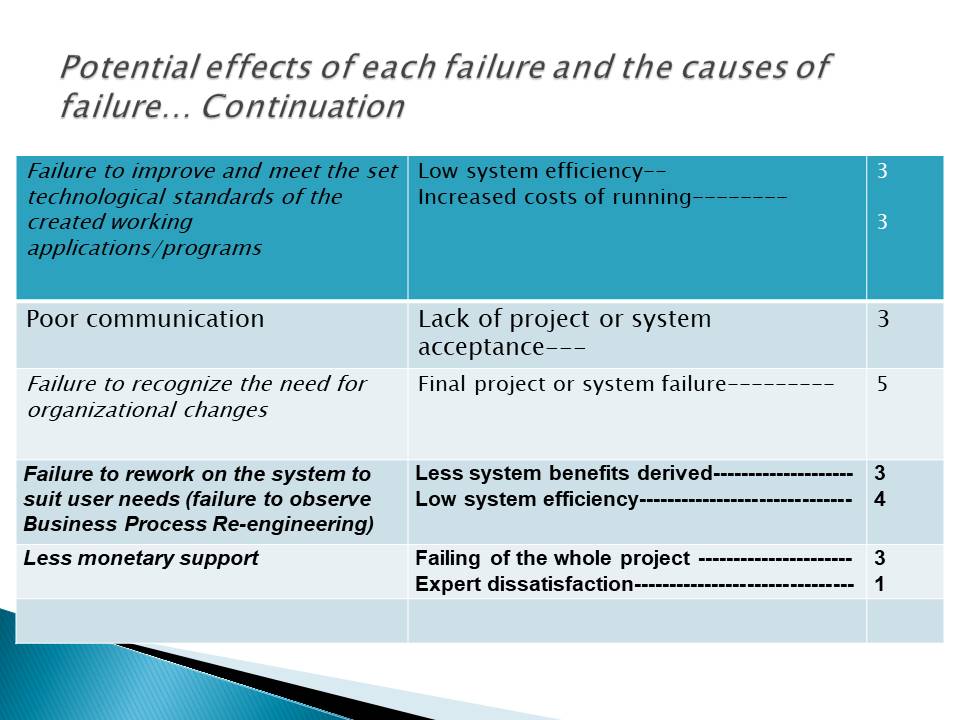
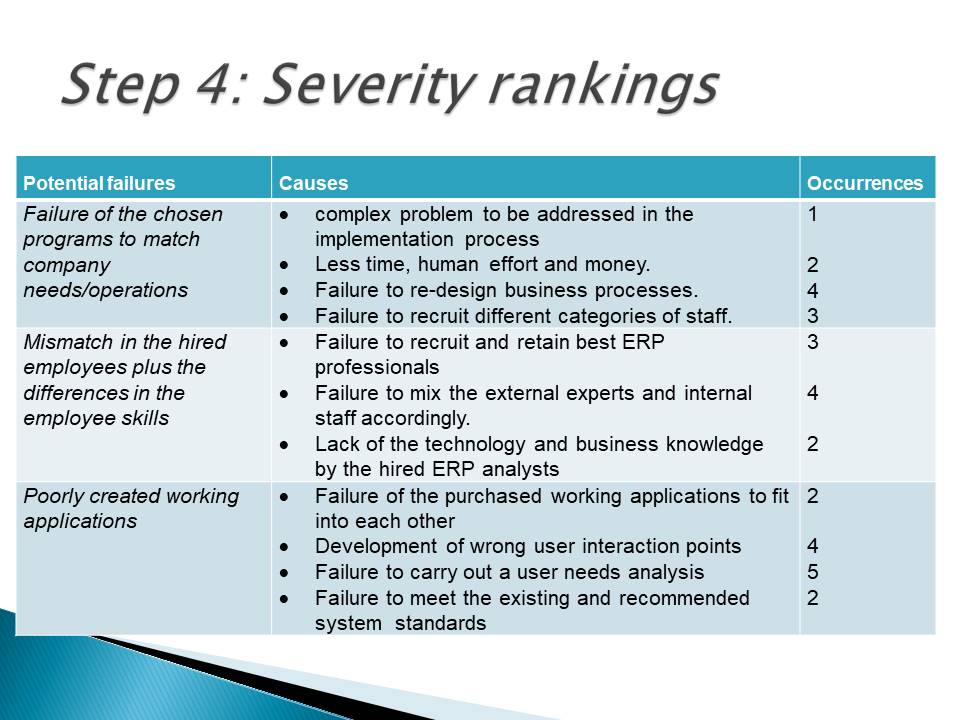
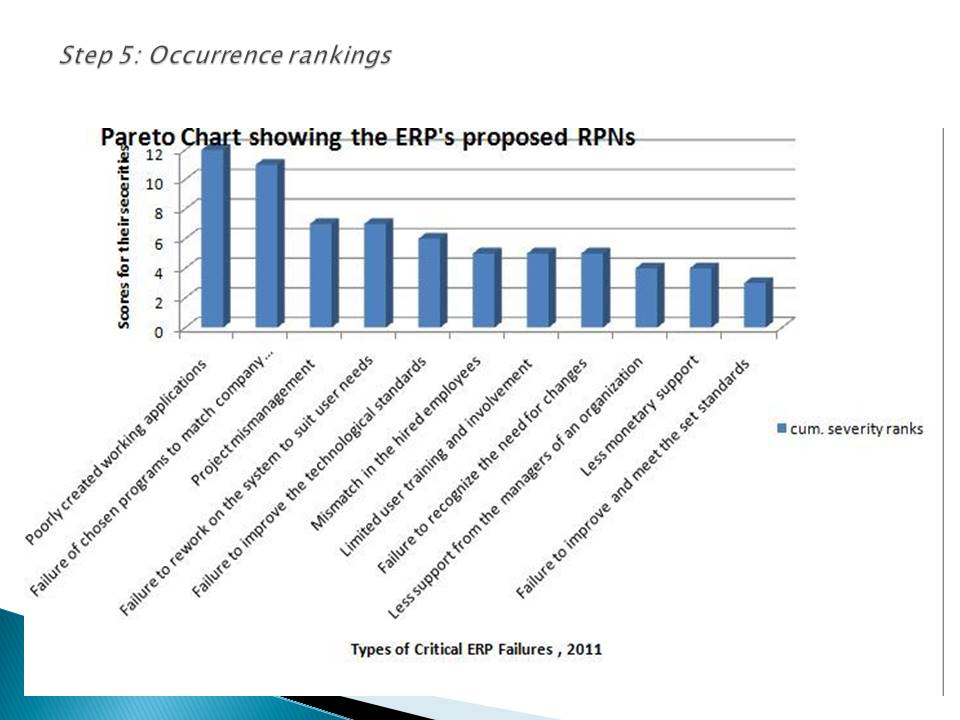
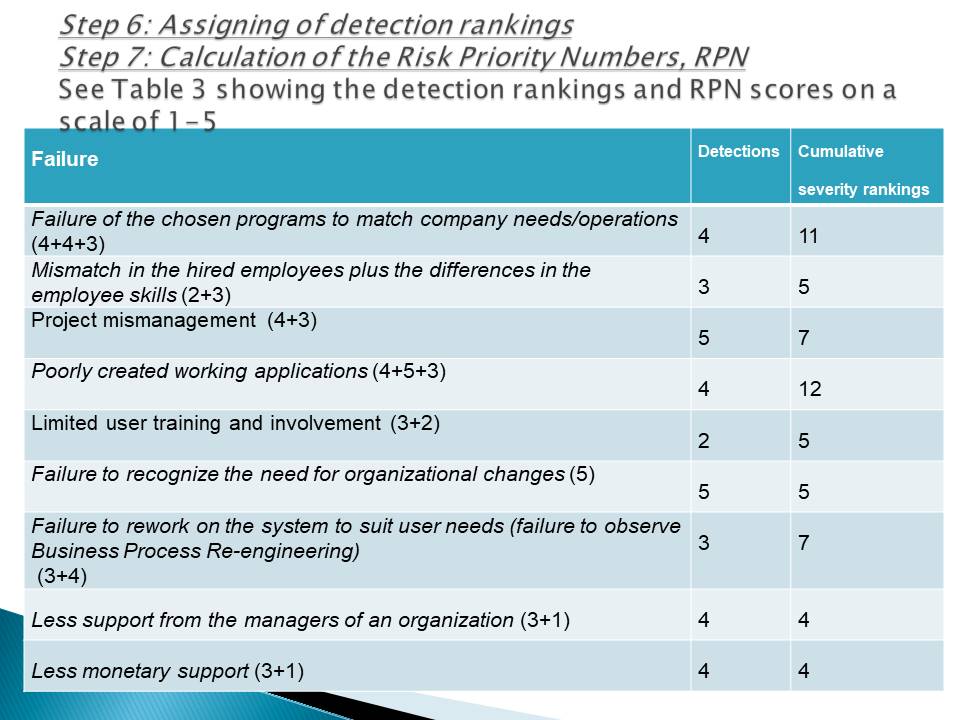
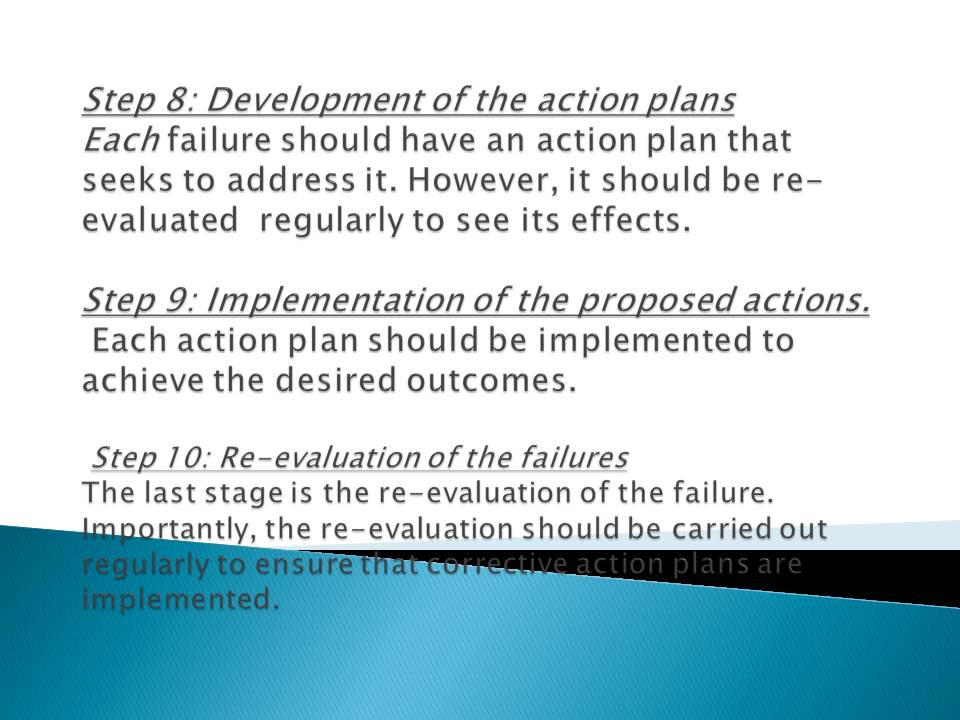
Conclusion
To wind up, in the implementation of ERP in the organization, there are several factors that need to be put into consideration. For instance, financial support, presence of expertise and infrastructure. Moreover, there are some failures that the management need to formulate some action plans to check against them to ensure success of the programme.
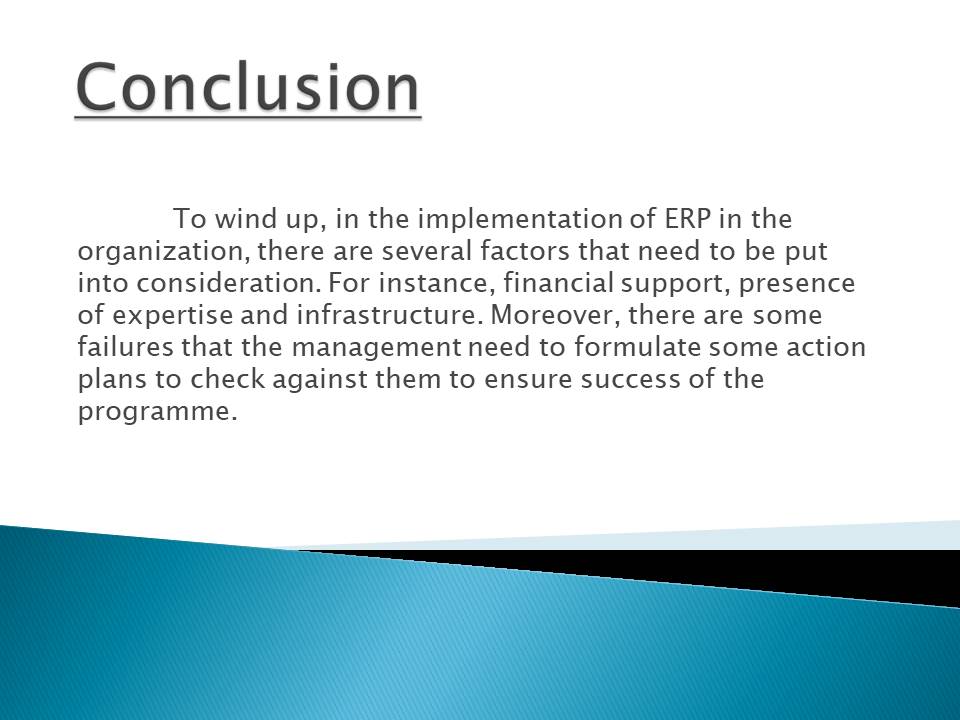
References
Aladwani, A.M. (2001). Change management strategies for successful ERP implementation. Business Process Management Journal, 7(3), pp. 266-275.
Al-Shamaln, H.M. & Al-Mudimigh, A.S. (2011). The change management strategies and processes for successful ERP implementation: A case study of MADAR. Journal of 2011 International Conference on Computer Communication and Management Process of CSIT, 5 (2011), pp.431-435.
Chen, I.J. (2001). Planning for ERP systems: analysis and future trend. Business Process Management Journal, 7(5), pp. 1012-1018.
Murray, M. & Coffin G. (2001). A case study analysis for factors for success in ERP system implementations. Proceedings of the Seventh Americas Conference on Information Systems, Boston, pp. 374–386.
Scheer, A. & Habermann, F. (2000). Enterprise resource planning: Making ERP a success. Communications of the ACM, 43(4), pp. 57–61.